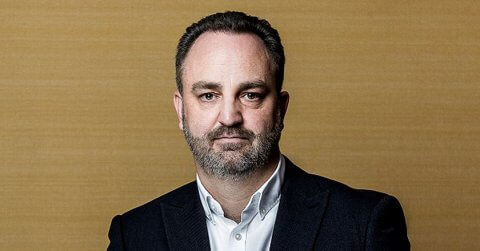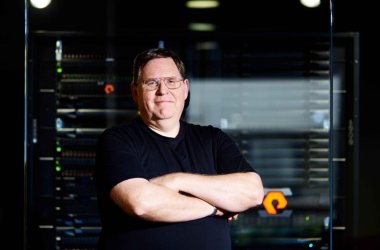Joe Baguley, Vice President & CTO, EMEA at VMware, has penned an insightful op-ed in which he explains how the advent of 6G technology will not only represent a new technological revolution, but a societal one. 
For decades, technology has permeated every aspect of business – sometimes overnight, like with smartphones, and others more gradually. But either way, these changes have been predicated on evolving existing systems and designed to adapt ways of doing things.
As we begin post-pandemic life, we’re about to bear witness to an altogether new change that doesn’t simply improve the tools and processes at our disposal, but completely reimagines them. It is a widely accepted view that we have accelerated through the pandemic but for businesses, this is not the time to take our foot off the gas. Indeed, now is the opportune moment to go further, faster and redefine global commerce in a way that reflects the connectivity of society and with sustainability at its core.
Entering the 6G era
That is because we are entering the 6G era – a technology that has the potential to be almost unimaginably pervasive. We’re only just scratching the surface of its potential but, according to Research&Markets, the global 6G Market will reach $1,773.09 billion by 2035, a little over a decade away. How to capitalise on this is on the agenda of every government and enterprise around the world.
The European Commission recently launched a new flagship initiative with an almost €12 million budget to research the 6G technology. HEXA-X has been designed to be the “umbrella” that spreads across the length and breadth of a large set of policies and areas.
The ultimate goal of 6G is to seize its potential as of 2030 to tackle green and energy efficiency, digital inclusion, or the adaptability of sectors such as health and safety.
The EU is in a very strong position to play a leading global role around 6G standard setting. Europe is home to some of the best scientists in the world. According to this report, one-third of all scientific publications that are subject to peer review emanate from Europe. 20% of all global R&D and 25% of all ICT R&D is carried out in Europe.
The EU Observatory for ICT Standards and the European Telecommunications Standard Institute (ETSI) is centrally involved in 5G standard-setting issues and will be key players in the process of 6G standard-setting too.
What happens if the connectivity becomes like air?
To grasp the enormity of where we are going, it’s important to understand where we are. We’ve made great progress with 5G, which was the basis of a generation of many first and audacious goals. It was the first to be born in the cloud, it is programmable and open and it has enabled IoT to develop.
But science and technology, combined with human vision and our inherent need to push boundaries, needs more. To give an example, some experts believe 6G networks could one day allow us to hit max speeds of one terabit per second (Tbps) on an internet device.
That’s a thousand times faster than 1 Gbps, the fastest speed available on most home internet networks today. This whitepaper, by the 5G Infrastructure Association states, “6G will bring a near-instant and unrestricted complete wireless connectivity… that will radically reshape the way enterprises operate.”
6G will open doors to applications including smart cities, edge devices, autonomous vehicles, holographic communication, and satellite communication. Realising these visions is what will happen when connectivity becomes as common, plentiful and unobtrusive as the air we breathe.
A self-perpetuating, self-improving playing field
Unlike 5G and previous generations of wireless technologies aimed at driving network performance towards higher bandwidth, lower latency and greater reliability, 6G is seen as an enabling platform for innovations in computing, artificial intelligence (AI), connectivity, sensors, virtualisation, and more.
It is designed to meet higher requirements of global coverage, greater spectral efficiency, lower carbon footprint, and more with focus on sustainability, equity, trust and safety.
The sustainability challenge is a case in point. It requires us to think beyond renewable energy. While energy consumption is an important aspect of sustainable practices, we also must consider things like land and water use, as well as recycling and sourcing of the materials used for electronics manufacturing.
It’s a point recognised by the WEF which said recently, “Connectivity will only evolve with the 6G era that can help the world reach the demanding targets of the “carbon law” and Paris Agreement to halve emissions every decade.”
The shift we have experienced to remote working practices is just the first step. Video conferencing and AR/VR telepresence solutions will do much more to help reduce carbon emissions and are here to stay but these changes require tools that better support remote interaction.
The same goes for every stage of business – how robots are used in the supply chain, how goods and data are stored, how and why offices function, and so on. The key to unlocking the potential of these technologies is 6G but traditional means of developing these new systems is not going to work. It will require a base that is not only iterative but can evolve as the data from the various components is created. We need a self-perpetuating, self-improving, and globally connected playing field
As part of its 6G Journey, we believe the following initiatives are pivotal to prepare the grounds for a sustainable 6G.
Re-architecting the internet for pervasive connectivity
The path to 6G requires a fundamental rearchitecting of the Internet to an Open Grid to better support major applications like control systems for Next Gen immersive applications and automated cars and factories, as examples.
This endeavor cannot be done alone as it requires true cross-collaboration among wireless, cloud and networking industries as well as academia at all stack levels – from dust to cloud. With this in mind, the Open Grid Alliance (OGA), of which we are part of, is an industry consortium assembled to define the next generation of the Internet’s architecture, particularly at the edge.
The goal of the OGA is to lay the groundwork for planet-scale automation — not stopping at the cloud, or even at the edge. Its aim is inclusive, worldwide, multi-sector, multi-dimensional thinking, driven by the evolution of the Internet. By taking it from the communications hub that we have now to a global, shared platform, our goal is nothing short of creating a better world.
This new world would include digital equity without any technical or operational hurdles — a world where thinkers and visionaries are encouraged to solve unsolvable problems and answer questions that haven’t yet been asked.
And the work will not stop there. VMware is developing concrete assets to aid in the discovery of our mutual path to this better world and building a multi-cloud Grid that will string together heterogeneous resources from wireless, cloud, and Internet providers to enable “hyper composed” applications — meaning applications that are dynamically created with resources that are of the right type, right place, right amount, and right time
The Next G Alliance, of which we are actively involved, is a consortium of 80 members for defining the national 6G roadmap and vision, including societal and economic needs. We are also continuing to develop a collaborative international research ecosystem to expand on our research and innovation portfolio in 6G, leveraging local strengths.
Automating Life
Our Automating Life vision is underpinned by the fusion of cloud, networking and AI technologies and a belief system structured around equity, sustainability and trust. To chart a successful course to 6G, the evolution of these underlying technologies must align with the evolutionary cycle of human behavior, society, and technology as they influence each other to form an evolution continuum.
This evolution continuum — the way people change, technology evolves, and society responds — is how we aim to shape the path to 6G — by promoting technologies centered around human needs, e.g., that improves and saves lives, but more importantly, enable humans to grow in and with technology in the way people want — not the way technology dictates. Recognizing European strengths, we just announced research grants for 6G-life and CeTI at TU Dresden and Telecommunication Networks Group (TKN) at TU Berlin to facilitate research and discovery on Automating Life.
6G is not simply an incremental upgrade of wireless, the cloud, or the Internet. It is the fusion of all of these for the re-imagination of a fully automated life that is built on planet-scale automation.
In the coming decade, 6G will bring a new era in which billions of things, humans, and connected vehicles, robots, and drones will generate Zettabytes of digital information. 6G will be dealing with more challenging applications like holographic telepresence and immersive communication and meet far more stringent requirements. It is not just a digital revolution, but a societal one.





